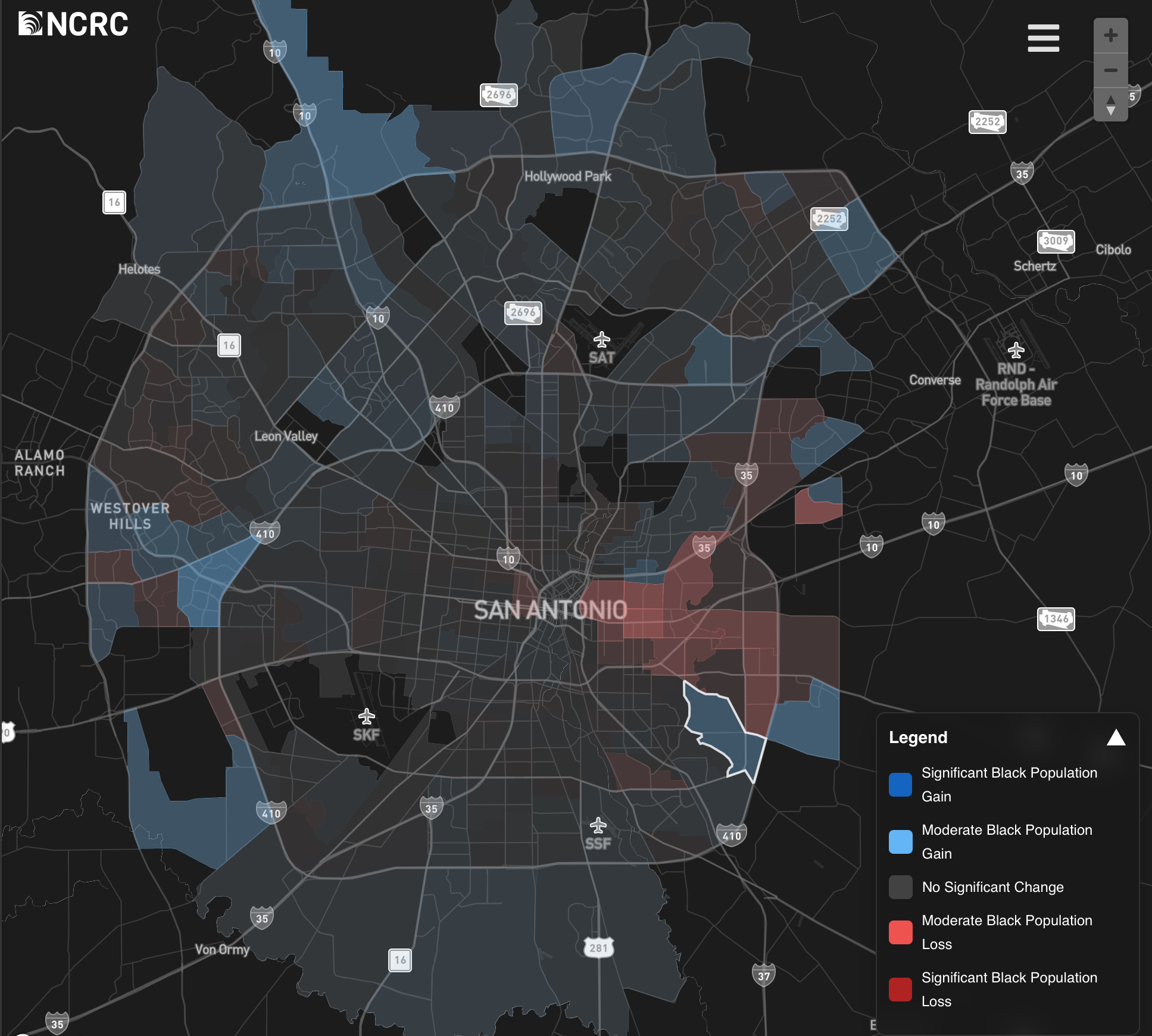2025 Displaced By Design Report Shows Fifty Years Of Gentrification & Black Cultural Displacement In US Cities
In the early to mid-20th century, millions of Black Americans left the rural South for cities in the North and West. This was the Great Migration — a move driven by hope, industrial jobs, and the promise of economic mobility. Urban centers offered better wages and an escape from the brutal reality of Jim Crow segregation and racial violence.
But while cities welcomed Black labor, they shut the door on housing. Redlining, racial covenants, and discriminatory lending locked Black families into designated neighborhoods — often near downtowns or industrial zones. These areas became hubs of Black culture, business, and political power, not by design, but by restriction.
Fast forward fifty years, and those same neighborhoods are now ground zero for gentrification.
Click the map below to see the interactive map from 1980-2020 of displaced Black residents in San Antonio, Texas:

This month, a report from the National Community Reinvestment Coalition (NCRC) collected all gentrification data from 1980-2020. NCRC makes it plain: gentrification didn’t just happen — it happened by design. Over five decades, more than 500 majority-Black neighborhoods were impacted. A third experienced full racial turnover. At least 261,000 Black residents are gone. The real number could be double.
Cities like Atlanta, D.C., New York, Philadelphia, and San Francisco top the list. But the effects also hit close to home. Austin, Houston, Dallas, and San Antonio have all seen rapid development at the expense of Black neighborhoods — from East Austin and Third Ward Houston to Oak Cliff Dallas and Dignowity Hills San Antonio. The result is often the same.
Where Does the Black Power Go?
As cities gentrify, Black political power dilutes. More Black families are moving to suburbs, exurbs, and unincorporated areas. As urban neighborhoods grow less affordable, cheaper rent pulls people farther from the cities they helped shape.
This shift weakens voting strength. These new communities often lack the critical mass to influence cultural, political, or economic change. Black residents are spread across jurisdictions, too thin to sway elections or demand resources.
New neighbors bring different priorities. Local businesses close. Churches shrink. Long-held city council seats flip or get redistricted. Just like that, cultural and civic influence disappears from places it once defined.
Maybe the City Was Never Ours
Many neighborhoods now called “up-and-coming” were once redlined and neglected. Investment didn’t arrive until the people changed — and even then, only for some. So when we say Black residents were displaced, let’s be honest: they were priced out of places that never fully valued them.
It’s easy to see it as being pushed out of what we built — because we were. But maybe it’s more complicated than that.
If the city was never structured for our prosperity, then what exactly did we lose?
As Black political engagement shifts from social justice to economic justice, we’re still walking the same path our ancestors walked a hundred years ago. Only now, we’re starting where they finished.








